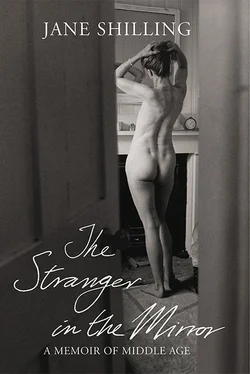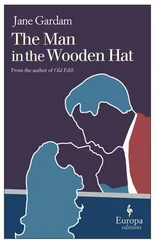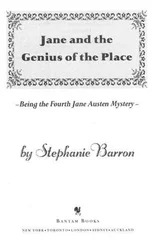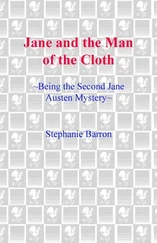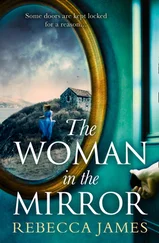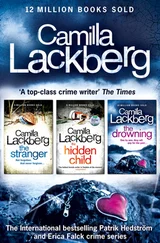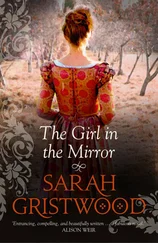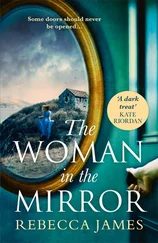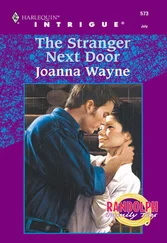The opportunities of which that voice had spoken so urgently were vanished and would not come again. No internal voice now urged me to embrace the experience of middle age. Still, if it had been reckless to squander the chances of early adulthood by continuing to behave like a teenager, I thought there might be equally pressing disadvantages in refusing to give up the tricks of one’s sexual peak once it was past.
I was haunted by a series of pictures I’d seen in a newspaper of the slender, pretty 52-year-old wife of an adulterous television presenter. ‘Finding out your husband of 15 years is a philanderer is not usually to be recommended,’ said the accompanying text. ‘Then again, there are some benefits. The 52-year-old housewife and mother of four says she is emerging from her heartache as a woman in her best shape ever. “I’m feeling great – 50 is the new 40, without a doubt…”’
Beneath the headline, ‘Look What You’re Missing!’, the betrayed wife posed in fishnet tights, a crimson basque and tight black pants, teetering on pole dancer’s black patent-leather shoes with mountainous platform soles. Her eyes were thickly lined in black, her face a painted geisha mask of stylised allure. Dressed in this burlesque costume she was evidently putting on some sort of performance. But what was it a performance of? And who was its intended audience?
Her faithless husband was clearly meant to understand that the wife he’d betrayed was a figure of powerful sexual allure. Or perhaps the subtext was not that of wishing to lure him back with a public display of erotic energy, but that of revenge. By exposing herself to millions of newspaper-reading strangers, dressed in the formal uniform of sexual performance (a garb that specifically denies privacy or intimacy – the qualities that his faithlessness might be thought to have damaged), his wife perhaps felt that she was, in effect, repaying the humiliation he had inflicted on her by making him a virtual cuckold.
Perhaps, too, an element of altruism was involved in the performance. The newspaper was one popular with women and much given to a sort of voyeuristic empathy with women’s preoccupations. Many of its readers might have felt the same shock of betrayal as the television presenter’s wife, and been consoled by reading about her experience.
It wasn’t the difficult mixture of revenge and defiance that haunted me, or even the way that the newspaper, while appearing to champion the injured wife, was also subtly exhibiting her as an object of ridicule (not coincidentally, it was the same paper in which appeared the scathing description of the middle-aged Madonna). Nor was I troubled by the expanse of 52-year-old flesh. On the contrary, I felt quite strongly that the more familiar the sight of the middle-aged female body, the better. The ambiguous cocktail of tenderness, sauciness, admiration, embarrassment and a trace of comic disgust that accumulated around the naked calendar modelled by middle-aged members of the Rylstone branch of the Women’s Institute (and the subsequent film, Calendar Girls ) struck me as a useful starting point for a discussion of the ways in which the female body might continue to be an object and instrument of desire, even when softened and marked with signs of wear and past its brief moment of adolescent perfection.
The thing that disturbed me about these pictures was the stripping away of any such complexity. These were not pictures celebrating a 52-year-old body in excellent condition, which had nevertheless borne four children and become a physical palimpsest of half a century of living, but of a menopausal woman demonstrating that she could pass, well lit and with plenty of make-up, for someone who wasn’t a menopausal woman.
Which seemed not just uninteresting, in the way that reproduction anything – whether paintings, furniture, jewels or youth – is more kitsch and boring, less resonant than the authentic article of which it is an imitation; but also to miss the whole notion of middle age as an interesting stage of life in its own right: troublesome, painful and difficult, as such transitional periods inevitably are, but with the beauty, depth and poignancy that clings to endings, late works, Indian summers…
However you romanticise it, the transition from youth and fertility to age and barrenness is bound to be unwelcome, so it is understandable that the menopause manuals should concern themselves mainly with tactics for deferring or mitigating the effects of the change.
Buried among the lists of symptoms, questionnaires (‘How Stressful is Your Lifestyle?’), diagrams of the ovary and graphs of oestrogen levels pre- and post-menopause in Dr Hilary’s book there lies the following statement: ‘Epidemiologists are aware that one of the reasons for the menopause having such a bad press is that only the views of women undergoing severe problems are ever represented… In fact, overall most women have a fairly uneventful menopause, with the majority experiencing a few short-lived adverse effects, and some blissfully sailing through menopausal waters with not a care in the world.’ He adds that in his own experience as a GP, ‘many women suffering from so-called menopausal symptoms are in fact encountering problems due to other unrelated medical conditions or environmental factors’.
This partly explains the mystery of why the phenomenon of menopause as a physical malady should be so strangely absent from pre-HRT female fiction and memoirs, but proposes an alternative notion: that the great incapacitating drama of menopause – the dismal catalogue of affliction listed in the BMA’s handbook, Understanding the Menopause & HRT – from anxiety, depression, dry vagina, fatigue and irritability, to palpitations of the heart, poor concentration, urinary problems and loss of interest in sex – might be, not a cultural construct exactly, nor precisely an artefact of the medical profession or the pharmaceutical industry, but an event defined as much by personal style and expectation as by science.
Dr Hilary’s modest endorsement of the ‘uneventful’ menopause notwithstanding, the advice of menopause handbooks is over whelmingly preoccupied with hormone replacement. The BMA handbook on Understanding the Menopause & HRT advises, ‘Try simple measures and lifestyle changes first’ (for menopausal symptoms), and describes as ‘a myth’ the belief that ‘oestrogen could be used as a panacea for all the effects of ageing’, but devotes just 20 pages (of 177) to these ‘simple measures’ (including the crucial factors of exercise and diet), and then states unequivocally that ‘HRT is the most effective treatment for menopausal symptoms’.
The notion of the menopause as an illness both reflects and compounds the low status of middle-aged women. But although Dr Robert Wilson characterised the menopause as a ‘serious, painful and often crippling disease’, his view of the climacteric would have gone the way of all sorts of other eccentric medical theories of the Sixties, if it were not for the fact that significant numbers of women remain willing to share his view of themselves as ‘diseased’.
At a college reunion I fell into conversation with a female doctor a little younger than myself and was surprised by the vehemence, almost the relish with which, when I said that I wasn’t taking HRT, she began to describe the shrivelling of flesh and crumbling of bone that would soon overtake me if I continued to reject the drug. I began to wonder, as I had during the conversation with the GP who warned that my post-partum belly would sag in pleated folds, or the young woman GP pressing me to accept chemical sterilisation, whether there was some extra agenda to our conversation, besides the unnecessary medication of a healthy middle-aged body.
Читать дальше
